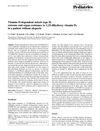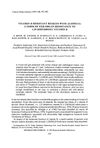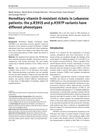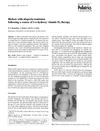Vitamin D Resistance: Tissue Resistance to Vitamin D and Vitamin D-Dependent Rickets Types I and II
April 1994
in “
Baillière's clinical endocrinology and metabolism
”
TLDR Some people have genetic mutations that make them resistant to vitamin D, leading to rickets even with enough vitamin D intake.
The document discussed tissue resistance to vitamin D, specifically vitamin D-dependent rickets (VDDR) types I and II. Both types presented with rickets symptoms despite adequate vitamin D intake. VDDR II was also associated with alopecia, though the reasons were unclear. VDDR I was caused by a defect in the gene encoding the enzyme 1α-hydroxylase, leading to decreased production of the active form of vitamin D. VDDR II resulted from mutations in the gene for the vitamin D receptor, affecting hormone or DNA binding. Both conditions were inherited in an autosomal recessive manner.



